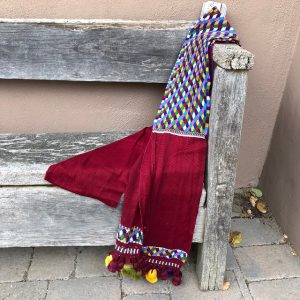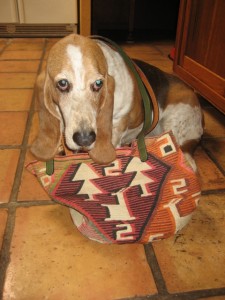Vintage Andean Treasures
 Recently, I was talking on the phone with Casey. She was very excited about a few cartons she had opened, containing vintage textiles from Bolivia and Peru. “I bought these for the shop 20-25 years ago. When we decided to close the shop so quickly and go online, I put them away knowing that it would be very fun when I brought them out again. But this is REALLY, REALLY FUN! I feel like I’ve uncovered a chest of buried treasure. It’s better than Christmas!”
Recently, I was talking on the phone with Casey. She was very excited about a few cartons she had opened, containing vintage textiles from Bolivia and Peru. “I bought these for the shop 20-25 years ago. When we decided to close the shop so quickly and go online, I put them away knowing that it would be very fun when I brought them out again. But this is REALLY, REALLY FUN! I feel like I’ve uncovered a chest of buried treasure. It’s better than Christmas!”
The textiles; mantas, belts, monteros, and more are indeed beautiful. And they are becoming increasingly hard to come by as the skills required to create them are lost among younger generations. Interest in acquiring centuries-old weaving skill is steadily giving way to learning skills which are more financially lucrative. Vintage clothing and textiles are thereby becoming increasingly rare and valuable.
But what is vintage, actually? Old? Oldish? In my mind, vintage is phase on a continuum. Older than retro, surely, but not as old as “antique” and definitely not to be confused with “dated!” However, concurrent with the idea of vintage are the ideas of fashion and style. The more I think about it, the more I am convinced that fashion comes and goes, but style is forever. Style connotes an an elemental endurance, intelligence in design, and fineness of craftsmanship. Fashion is transient. Things are adapted constantly to BE fashionable, but the best HAVE style.
Whether we label items as “retro,” “vintage” or “antique,” they have inherent style. The words – no matter if they describe clothing or cars or furniture or art – refer to things that are not merely fashionable or “on-trend,” they imply something better. They indicate the relative age of a well-made item of intrinsic value that will never go out of style. In a word, such items are timeless.
Casey’s cartons of vintage Latin American textiles have that timeless quality. Each piece was painstakingly crafted by artisans living high in remote Andean villages. The weaving techniques used reflect generations of family tradition, indigenous materials, and local meaning. Each piece tells a special story about it’s origins. Yes, she uncovered a treasure chest indeed!
Contributed by Linda for It’s Cactus

![ecu8057[1]](https://blog.itscactus.com/wp-content/uploads/2012/07/ecu805711-196x300.jpg)
 That’s how mine looked, the day it was given to me. A beautiful shigra with bold geometric patterns, animals, trees, numbers, and letters in pink, red,orange, brown and black and two long fiber straps. Two days later, however, it had been altered by my dog, who decided to add a little fiber to her diet, I guess. She had a mouthful and my straps were a tattered mess. I said, “Oh no, no, no, you naughty Little Darling,” or maybe something a tiny bit stronger, and saved what I could. I retied the ends and that worked well enough for a while, but admittedly, they were a little short. Eventually I replaced them entirely with leather. This was at no small expense, but in all honesty, I think it was worth the price. The new handles nicely preserve the integrity of my shigra and I happily carry a fantastically functional and fashionable Andean textile everywhere I go. My basset hound too, is pleased with my shigra’s stylish utility and she is very glad she didn’t eat the whole thing after all.
That’s how mine looked, the day it was given to me. A beautiful shigra with bold geometric patterns, animals, trees, numbers, and letters in pink, red,orange, brown and black and two long fiber straps. Two days later, however, it had been altered by my dog, who decided to add a little fiber to her diet, I guess. She had a mouthful and my straps were a tattered mess. I said, “Oh no, no, no, you naughty Little Darling,” or maybe something a tiny bit stronger, and saved what I could. I retied the ends and that worked well enough for a while, but admittedly, they were a little short. Eventually I replaced them entirely with leather. This was at no small expense, but in all honesty, I think it was worth the price. The new handles nicely preserve the integrity of my shigra and I happily carry a fantastically functional and fashionable Andean textile everywhere I go. My basset hound too, is pleased with my shigra’s stylish utility and she is very glad she didn’t eat the whole thing after all.